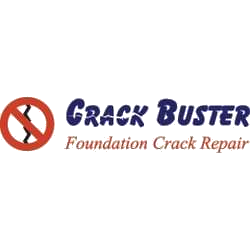HOW TO SEAL CRACKS IN A CRAWL SPACE
Keeping the crawl space in your building dry is absolutely essential to avoid any rot, mold, allergens and insect damage. Here are a few step by step instructions on how to keep water and moisture away from the crawl spaces and how to eliminate existing moisture from the space.
Stop water seepage into the crawl space from the building exterior- Identify the point from where water enters the crawl space from outside and seal the opening. You must first check the downspouts and roof gutters as it is from these areas that water and moisture seeps into crawl spaces.
If there are fountains and springs close to your building and the site is always wet, then you may have to take special measures such as installing a sump pump and drainage system inside. If the problem persists, you may even have to install waterproofing and exterior foundation drainage to avoid water seepage into the crawl space.
Keep in mind that the runoff from the surface and roof must be directed away from the building as these measures are very expensive and cannot be redone repeatedly. Conduct a thorough inspection on the exterior of the building to see if any other water source must be directed away from the building.
Controlling water seepage from the building interior – It is important to inspect every single area starting from the basement to the attic for sources of moisture, leaks and improper venting. Inspect the crawl spaces with care to determine the water entry pattern and trace the pattern to the source of trouble.
After locating the source, repair the leaks in the drains. Be sure to check for any leaks in the kitchens, bathrooms, steam condensate return lines and hot water heating lines from where water could be seeping into the crawl space.
Check for leaks in supply piping and repair the same instantly in the crawl space. During humid weather, you will find the condensation from the cold water lines dripping. To avoid this, it is essential insulating the cold water pipes in the basement as well as in the crawl space.
Venting the Crawl Space
Venting the outside air, especially under humid weather conditions into the cooler crawl space actually increases the moisture inside. It is for this reason that experts do not recommend humidistat-controlled or simple passive venting unless absolutely required. The best option is to keep the crawl space dry and conditioned.
Crawl Space Drying Process
Firstly, remove the debris from the crawl space including splinters and nails that are hazardous to workers who will be drying the space. Be sure to discard stored junk and old cardboard boxes that attract rodents and mold.
After identifying the seepage area, use our polyurethane crack injection to seal the foundation cracks in the crawl space. Being flexible, the polyurethane resin is tough enough to prevent water from seeping into the concrete. Sealing the crack will prevent any future water seepage thereby ensuring a dry and clean crawl space.

There are no comments